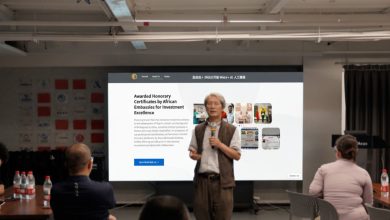
Shenzhen’s Comprehensive Advantages in the Integrated Circuit Industry Chain
Introduction: Shenzhen’s Growing Dominance in IC Industry
Shenzhen has emerged as a powerhouse in China’s semiconductor and integrated circuit (IC) industry, boasting a complete industrial chain that spans design, manufacturing, packaging, testing, and equipment production. With major players like HiSilicon, ZTE Microelectronics, and BYD Semiconductor, the city has built a robust ecosystem that fosters innovation and competitiveness.
In my experience visiting Shenzhen’s tech hubs, the city’s strategic policies and investment in R&D have significantly accelerated its IC sector. The recent “Several Measures to Promote High-Quality Development of Semiconductor and Integrated Circuit Industry in Shenzhen” further strengthens this momentum. This article explores Shenzhen’s IC industry advantages, policy support, and future growth potential.
Shenzhen’s IC Industry: A Full-Chain Ecosystem
Shenzhen’s IC industry covers the entire value chain, from chip design to advanced packaging. Key segments include:
- Chip Design: Home to leading firms like HiSilicon (Huawei’s chip division), which develops cutting-edge processors for 5G and AI applications.
- Manufacturing & Foundries: While Shenzhen focuses more on design, it collaborates with domestic foundries like SMIC for production.
- Packaging & Testing: Companies like JCET provide advanced packaging solutions, enhancing chip performance.
- Equipment & Materials: Local firms are making strides in lithography machines, etching equipment, and semiconductor-grade materials.
When I spoke with industry insiders, they emphasized Shenzhen’s unique advantage: its proximity to electronics manufacturers in the Pearl River Delta. This allows rapid prototyping and commercialization of chips, reducing time-to-market.
Government Policies Driving IC Industry Growth
The “Several Measures” policy introduces 10 key initiatives to boost Shenzhen’s IC sector:
- Subsidies for Chip Design & Tape-Out: Financial support for local firms to offset high R&D and manufacturing costs.
- EDA Tool Development: Encouraging domestic electronic design automation (EDA) software to reduce reliance on foreign tools.
- Equipment & Materials Breakthroughs: Funding for core technologies like lithography machines and high-purity chemicals.
- Advanced Packaging Support: Incentives for companies adopting cutting-edge 3D packaging technologies.
I personally recommend keeping an eye on Shenzhen’s Semi Industry Investment Fund, a 5-billion-yuan fund aimed at strengthening the local IC supply chain. This fund will likely accelerate breakthroughs in key areas like automotive chips and AI processors.
Market Performance & Future Outlook
Shenzhen’s IC industry reached 142.4 billion yuan ($19.6 billion) in H1 2025, a 16.9% YoY growth—a record high. This growth is fueled by:
- 5G & AI Demand: Shenzhen-based firms supply chips for Huawei, ZTE, and other tech giants.
- Electric Vehicles (EVs): BYD Semiconductor’s power chips are critical for China’s EV boom.
- Domestic Substitution: With global supply chain uncertainties, Shenzhen is prioritizing self-sufficiency in key IC technologies.
Looking ahead, Shenzhen aims to become a global IC hub by 2030, competing with Shanghai and Beijing. The city’s strong industrial base, policy incentives, and innovation-driven ecosystem position it for long-term success.
Conclusion: Why Shenzhen Stands Out in the IC Industry
Shenzhen’s integrated circuit industry thrives due to its complete supply chain, strong policy backing, and dynamic innovation environment. Whether you’re an investor, engineer, or tech enthusiast, Shenzhen offers unparalleled opportunities in semiconductors.
From my observations, the city’s next challenge is scaling up manufacturing capabilities to match its design prowess. If successful, Shenzhen could redefine the global IC landscape in the coming decade.
Keywords: Shenzhen IC industry, semiconductor policies, chip manufacturing, HiSilicon, BYD Semiconductor, integrated circuit supply chain
Would you like additional insights on specific companies or investment opportunities in Shenzhen’s IC sector? Let me know in the comments!





